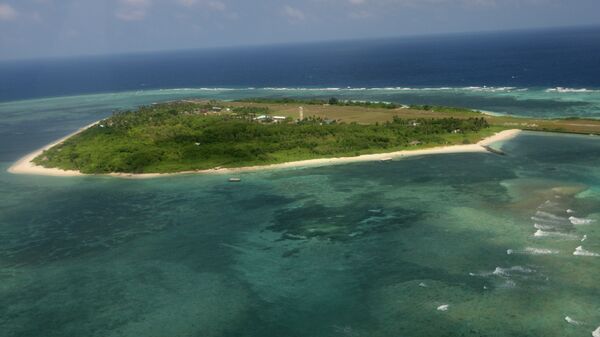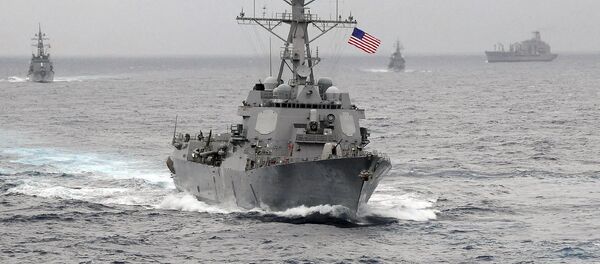They launched a military provocation in the South China Sea. Or, according to Pentagonese newspeak, they "challenged" Chinese "claims" in the "contested waters".
The proverbial Empire of Chaos lackeys — Australia, Japan, Philippines — endorsed it. Indonesia, in a sober assessment, essentially branded it a needless provocation.
There's no evidence the provocation spiral will be defused anytime soon. The US and Japan are objectively aligned in the South China Sea. Beijing has already made it clear to Washington in numerous instances that if a militarily resurgent Tokyo starts some sort of naval gambling, the response will be harsh.
This might happen via the Philippines, weaponized by Japan, trying to provoke China on a disputed islet in the South China Sea, and counting on the cavalry, sorry, the US Navy, to come to the rescue. The Chinese will make it very clear to Adm. Harris the US would be playing with fire.
The real public enemy
That's the pop version — complete with sing along — of China's 13th Five-Year-Plan, which after four days of debate crystallized the road map to 2020.
So what the world should expect is a massive collective effort as China will keep growing at a still enormous 6.5 per cent a year while slowly but surely tweaking its economic model. As a historic task, this rivals the three decades of Chinese miracle unleashed by Little Helmsman Deng Xiaoping's "to get rich is glorious" reforms.
In parallel, expect Washington to remain obsessed by public enemy number one. No, it's not Russian President Vladimir Putin. It's China's Central Bank.
China's Central Bank is fully committed to the creation of a global reserve currency made up of a basket of world currencies and controlled by the IMF. The process should be based on IMF shares held by its 185 member nations, the special drawing rights (SDRs).
The new global currency should be used for trade, pricing commodities, accounting, and government finance.
For Washington, unsurprisingly, a global alternative to the US dollar is absolute anathema.
So Beijing's relentless push to reform the Bretton Woods institutions — giving greater voice to the BRICS — will keep being stalled.
Well, that's still OK with Beijing — because the push has now diverted to plenty of alternative mechanisms; the BRICS's New Development Bank (NDB); the China-led Asian Infrastructure Investment Bank (AIIB); further economic cooperation inside the Shanghai Cooperation Organization (SCO); and the fabulous expansion within the next 10 years of the New Silk Roads, or "One Road, One Belt", as they're known in China. China has plenty of options to spend its $4 trillion in foreign currency reserves — the world's largest stash.
And the living dead are back
In parallel, the Russia-China strategic partnership keeps advancing, as Russia is now China's top oil supplier.
Xi Jinping not by accident was greeted as an ersatz King of England in his latest tour de force, just as Chancelllor Angela Merkel has been to China with the eyes of German industrialists focused on the New Silk Roads, one of whose terminals is in Duisburg.
And also not by accident, German Economics Minister Sigmar Gabriel, meeting with President Putin, said that EU sanctions on Russia should be eased. German-Russian bilateral trade is now hostage to EU sanctions on Russia, largely forced upon the usual lackeys by Washington. Berlin wants out, fast. So what if there are "frictions" between Germany and Central/Eastern European basket cases.
As much as German-Russian energy integration proceeds unabated, civil society across Europe is starting to come out in full force against NATO's shenanigans.
"One Belt, One Road" will have a way to catalyze all these interlocking movements as it's the prime project of pan-Eurasian integration, a multi-ethnic caravan proposing all-out trade and not all-out war. Here are the basics.
No wonder Washington is as fearful of BRICS integration, the NDB, the AIIB, the SCO and the New Silk Roads as it is of China's Central Bank.
So what do we have from the Beltway as a proposal for the 21st century? The Return of the Living Dead — as in the neocons launching a 2016 manifesto. May they bask in their endless war glow.
The views expressed in this article are solely those of the author and do not necessarily reflect the official position of Sputnik.






